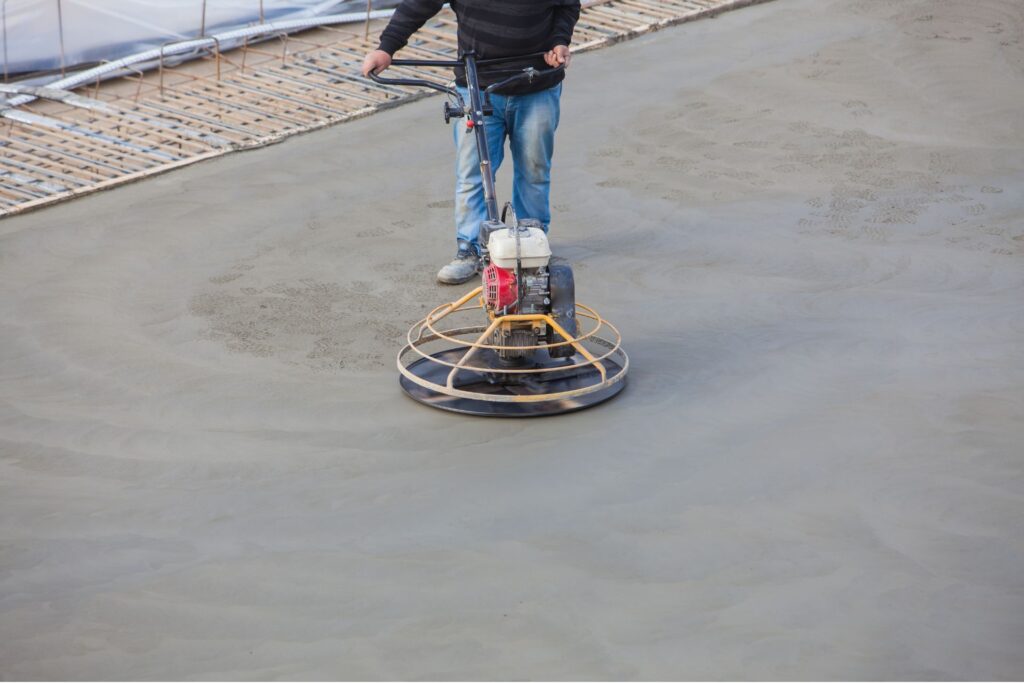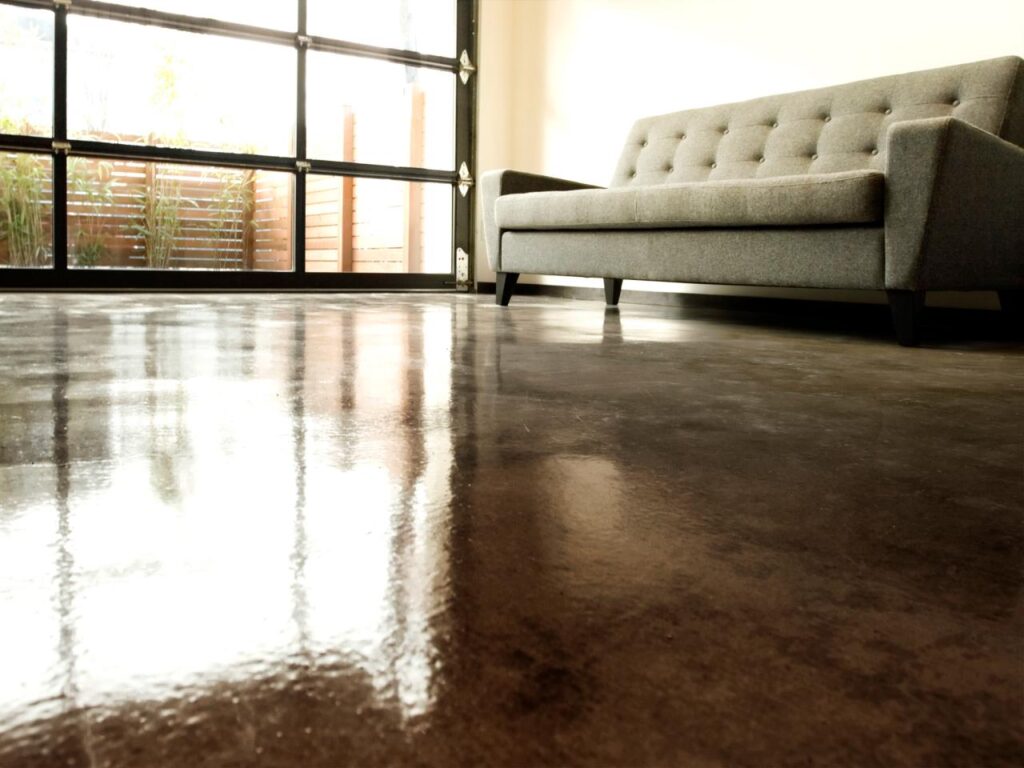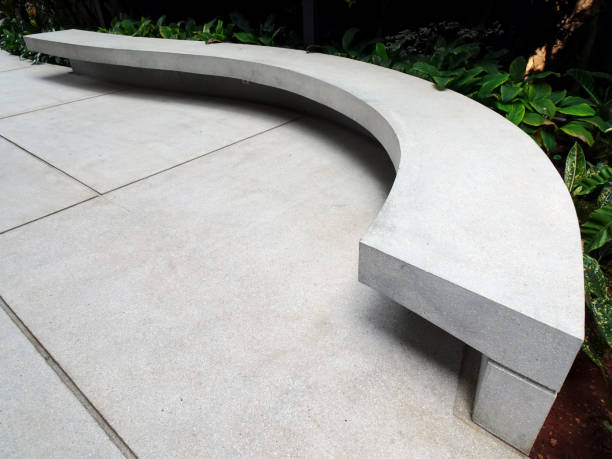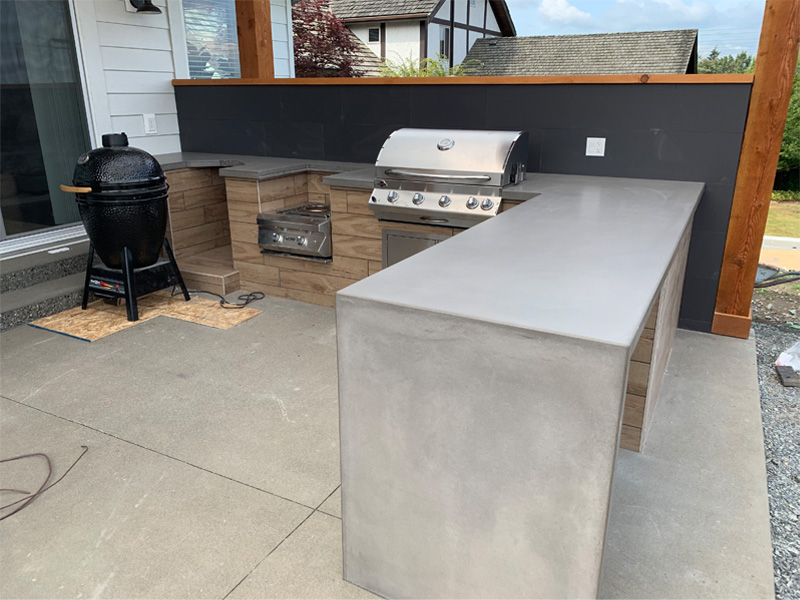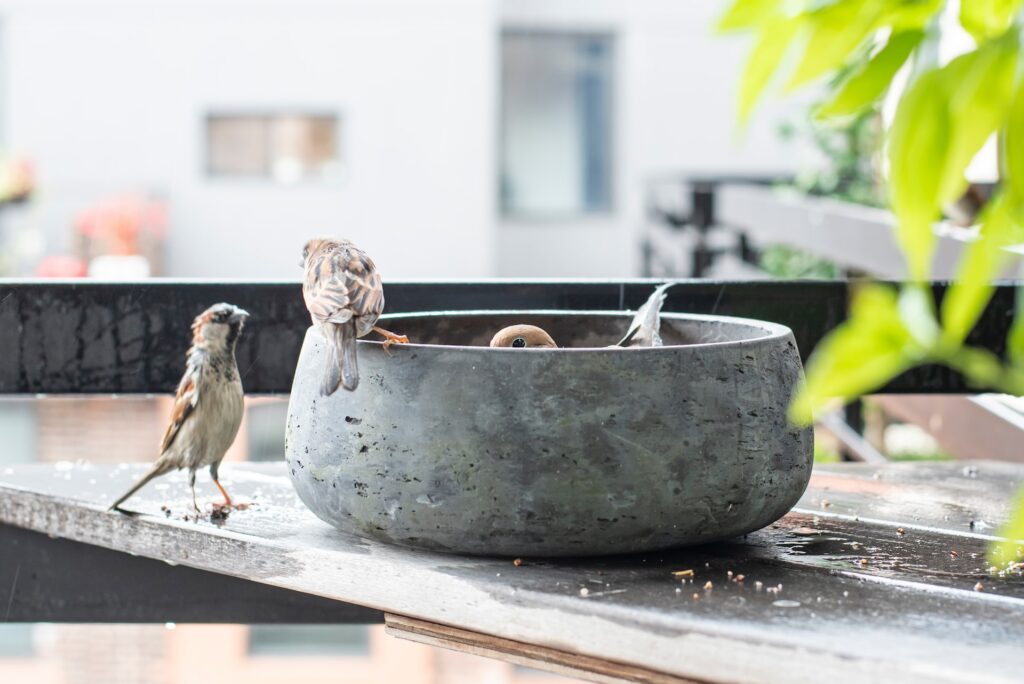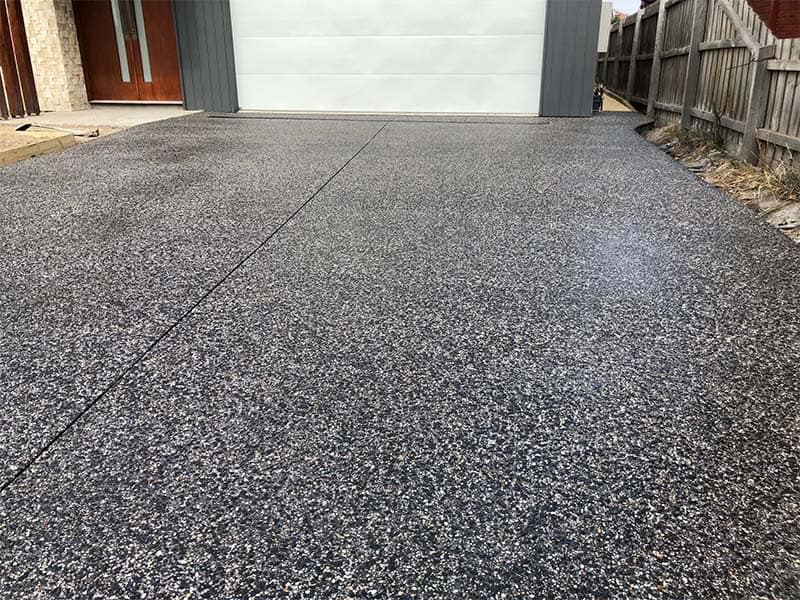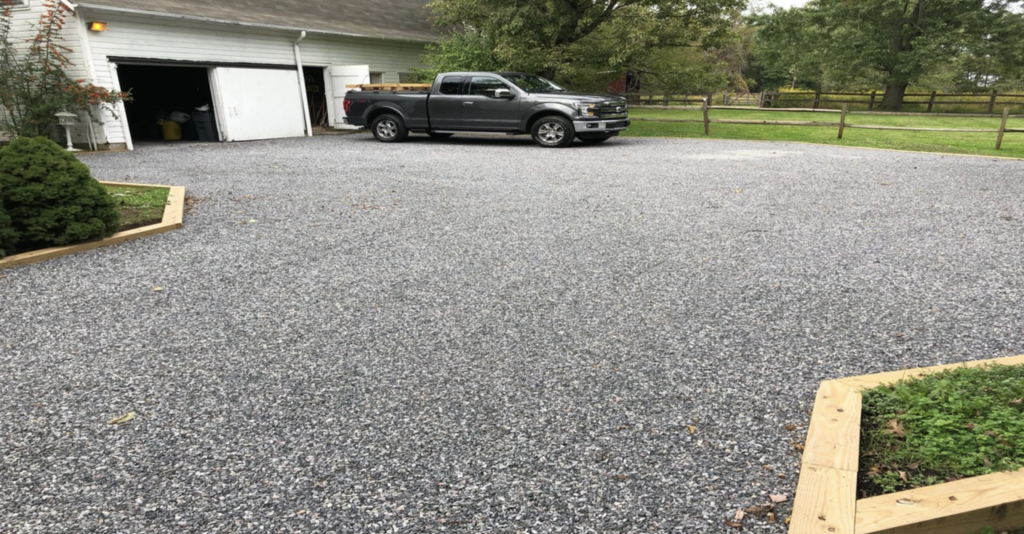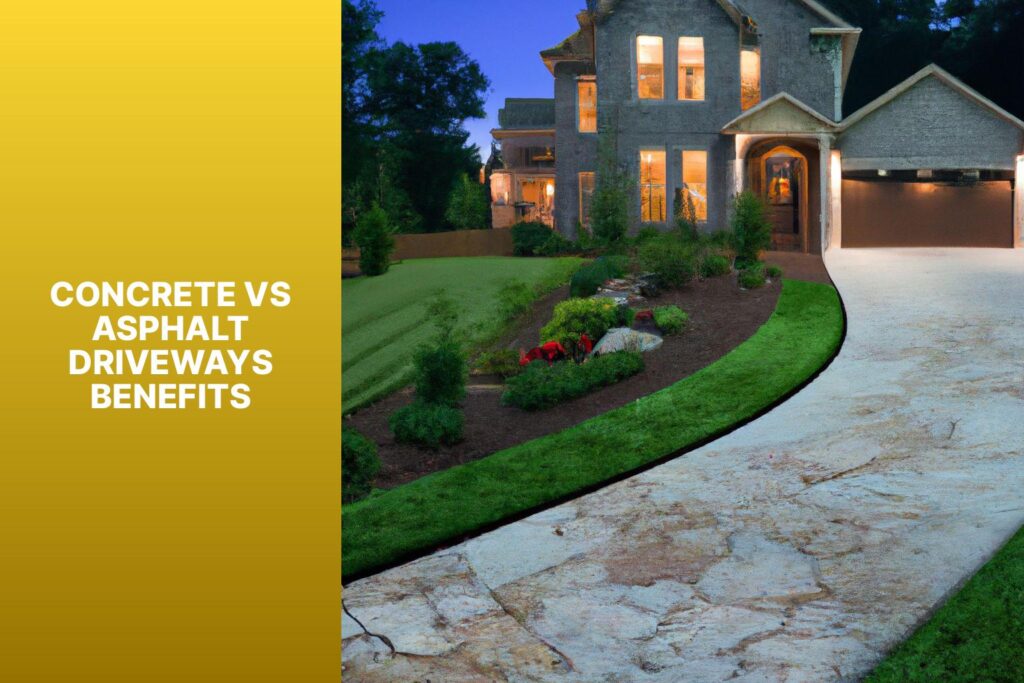Applying sealant on concrete helps protect and extend the life of your surfaces. This guide covers types of sealers, their benefits, and tips on application.
Key Takeaways
- Concrete sealers are divided into film-forming and penetrating types, each offering distinct benefits based on application needs.
- Using concrete sealers enhances durability, protects against water and stain damage, and improves aesthetic appeal.
- Proper application and maintenance of sealers are essential for longevity, and selecting eco-friendly options reduces environmental impact.
What is a Concrete Sealer?
A concrete sealer is a protective coating applied to the surface of concrete to shield it from damage, staining, and discoloration. These sealers come in two main types: film-forming and penetrating. Film-forming sealers create a physical barrier on the surface of the concrete, enhancing its durability and appearance. On the other hand, penetrating sealers absorb into the concrete, providing protection from within by blocking pores and preventing moisture and contaminants from seeping in.
Concrete sealers are versatile and can be used on both new and old concrete surfaces. They are available in various formulations to suit different applications and environments, ensuring that your concrete remains protected and visually appealing. Whether you’re looking to seal a driveway, patio, or interior floor, choosing the right concrete sealer is crucial for long-lasting protection and maintenance.
Types of Concrete Sealers
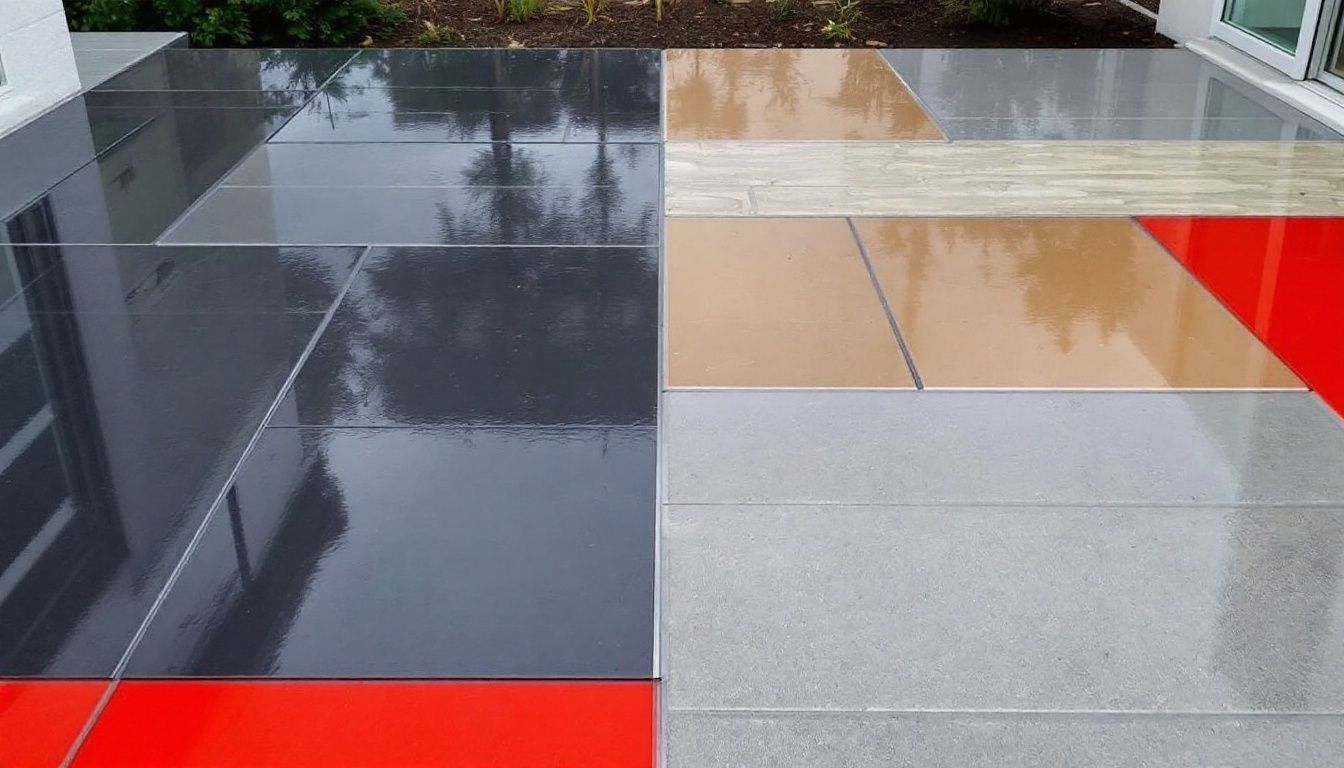
Concrete sealers are categorized into film-forming and penetrating types, each offering unique benefits for various applications. Film-forming sealers create a protective barrier on the surface, enhancing durability and simplifying maintenance, making them ideal for driveways, patios, and other exposed surfaces. Different sealer types provide varying gloss levels, affecting both the aesthetic and functional qualities of concrete surfaces.
Penetrating sealers seep into the concrete, forming a durable internal barrier that protects against water, stains, and contaminants, suitable for both indoor and outdoor use. Knowing the differences between these sealers aids in selecting the appropriate one for your needs.
Film-Forming Sealers
Film-forming sealers create a protective film on the concrete’s surface and are available in three main types: acrylic, epoxy, and polyurethane. Acrylic sealers are popular for general protection, providing a thin, cost-effective layer that might need more frequent recoating.
Epoxy sealers cater to interior spaces, offering long-lasting protection with formulations for different needs. Polyurethane sealers are known for their versatility and strength, providing a non-yellowing protective layer ideal for high-traffic areas.
These sealers protect the concrete while enhancing its color and gloss, adding visual appeal. Selecting the right film-forming sealer ensures that your concrete surfaces remain attractive and durable for years. Additionally, film-forming sealers can enhance the gloss levels of concrete surfaces, impacting their appearance and maintenance requirements.
Penetrating Sealers
Penetrating sealers enter the concrete’s capillaries, forming a durable internal barrier that resists water-borne pollutants, salts, and contaminants, protecting against grime and spills. Industrial-grade options also resist dusting, wear, oils, and greases, suitable for heavy-duty use.
Penetrating sealers, particularly those made from silane siloxane, are valued for their minimal environmental impact. They leave a natural matte finish, preserving the original look while offering strong protection for both indoor and outdoor surfaces.
Benefits of Using Concrete Sealers
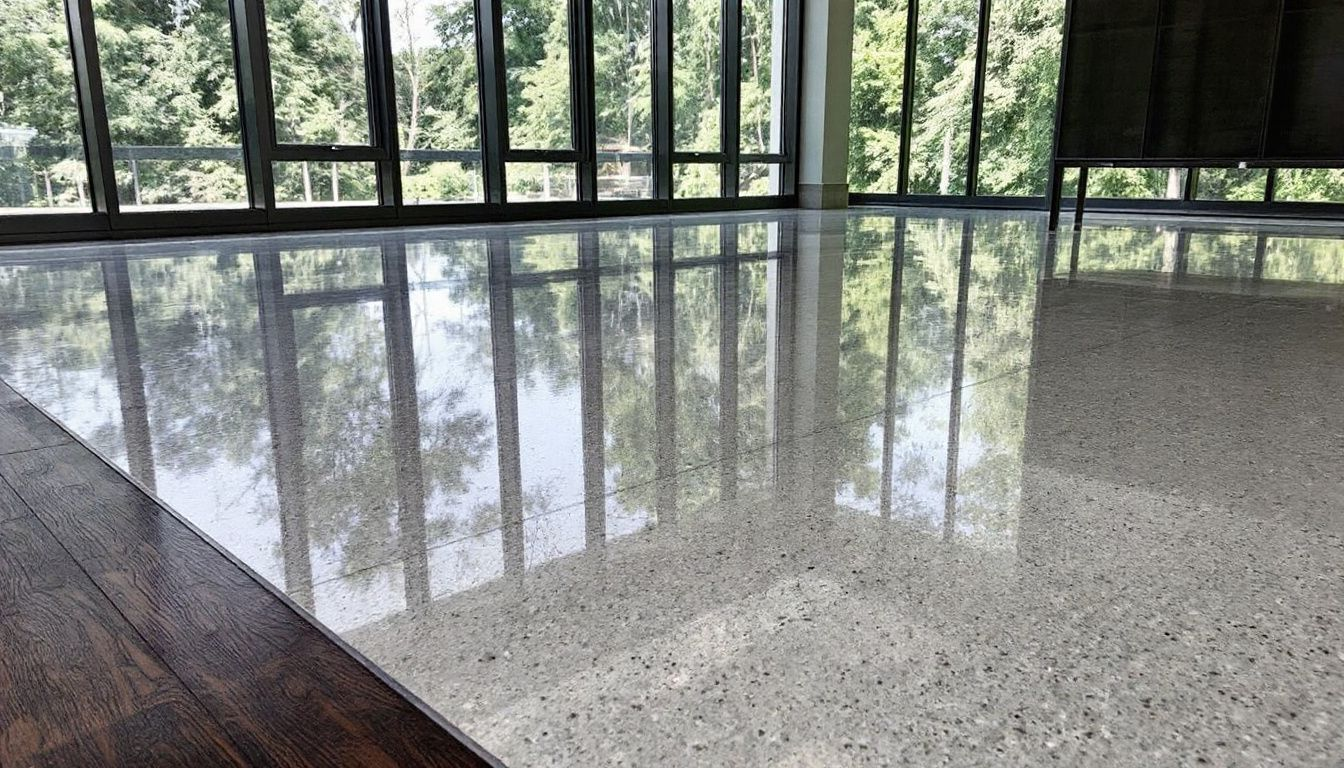
Using concrete sealers offers numerous benefits, such as enhancing the concrete’s strength and reducing the risk of cracking, spalling, or staining. Regular maintenance and additional coats can extend the surface’s lifespan, keeping it durable and visually appealing. Sealers also protect against contaminants, stains, and moisture, simplifying maintenance and preserving appearance.
Choosing the right concrete sealer ensures long-lasting durability and aesthetic appeal. Consider the project’s purpose, such as moisture protection or appearance enhancement, to select the best option. The right sealer provides both protection and beauty for your concrete surface.
Protection Against Moisture and Stains
Concrete sealers protect against damage from grime, spills, and water, preventing efflorescence (a white powdery substance from moisture evaporation). Low VOC sealers enhance indoor air quality by reducing harmful chemical emissions, lowering health risks like respiratory issues and allergies.
Avoid foot or vehicle traffic until the sealer is completely dry, which may take several days. Proper drying time and high-quality sealers effectively protect your concrete surfaces from moisture and stains.
Enhanced Aesthetic Appeal
Concrete sealers significantly enhance the aesthetic appeal of surfaces. Specialty penetrating sealers can enrich the color while resisting stains and contaminants. Tinted sealers add vibrancy and attractiveness to concrete surfaces. Different gloss levels can further enhance the visual appeal of concrete surfaces by providing varying finishes and textures.
Penetrating sealers preserve the natural appearance of concrete while providing strong protection against water and stains. High-quality sealers ensure that your surfaces look great and are well-protected against the elements.
Choosing the Right Sealer for Your Project
Selecting the right concrete sealer requires considering factors like specific application needs and environmental conditions. Properly applied sealers extend the concrete’s lifespan by protecting it from environmental damage. Identifying the type of surface, such as driveways or decorative slabs, helps determine the appropriate sealer.
Choosing eco-friendly concrete sealers reduces harmful emissions and supports sustainable construction practices. Understanding your project’s specific needs helps select a sealer that offers both protection and aesthetic benefits. Additionally, selecting the appropriate gloss level is important for both aesthetic and functional purposes, as different sealer types provide varying gloss levels that affect slip resistance and maintenance requirements.
Indoor vs. Outdoor Applications
Indoor and outdoor sealers differ in formulation, intended use, and the protection they offer under various conditions. Outdoor sealers generally provide better protection against UV rays and weather elements. For example, acrylic sealers are often used outdoors for their ability to release trapped moisture while repelling surface liquids.
Indoor sealers emphasize appearance and abrasion resistance, enhancing interior aesthetics while protecting against moisture for various interior applications. Knowing these differences is crucial for selecting the right sealer for your specific needs. Additionally, gloss levels can vary between indoor and outdoor sealers, affecting their appearance and maintenance.
High-Traffic Areas
In high-traffic areas, choosing a durable and abrasion-resistant sealer is essential. Polyurethane sealers are effective due to their durability and flexibility with temperature changes. Epoxy coatings are also preferred for their strong resistance to scuffs and abrasions.
For heavily trafficked areas like driveways or garages, solvent-based sealers are recommended for their durability and wear resistance. Selecting the right sealer ensures long-lasting protection and maintains the surface’s appearance.
Specialized Sealers for Specific Needs
Different types of concrete sealers are designed to meet specific needs and requirements, ensuring that your concrete surfaces receive the best possible protection. For instance, coloured sealers are perfect for enhancing the appearance of coloured concrete, adding vibrancy and depth to the surface. These sealers not only protect but also enrich the color, making your concrete look more attractive.
For exposed aggregate surfaces, specialized sealers help maintain the textured appearance while providing robust protection against weathering and wear. These sealers penetrate the surface of the concrete, ensuring that the aggregate remains intact and visually appealing.
Interior applications often require low VOC (volatile organic compound) sealers to meet indoor air quality standards. These eco-friendly sealers minimize harmful emissions, making them ideal for use in enclosed spaces. Additionally, some sealers are specifically formulated for old concrete, which may need extra preparation and treatment before sealing. These specialized sealers ensure that even aged concrete surfaces can be effectively protected and revitalized.
Application Process for Concrete Sealers
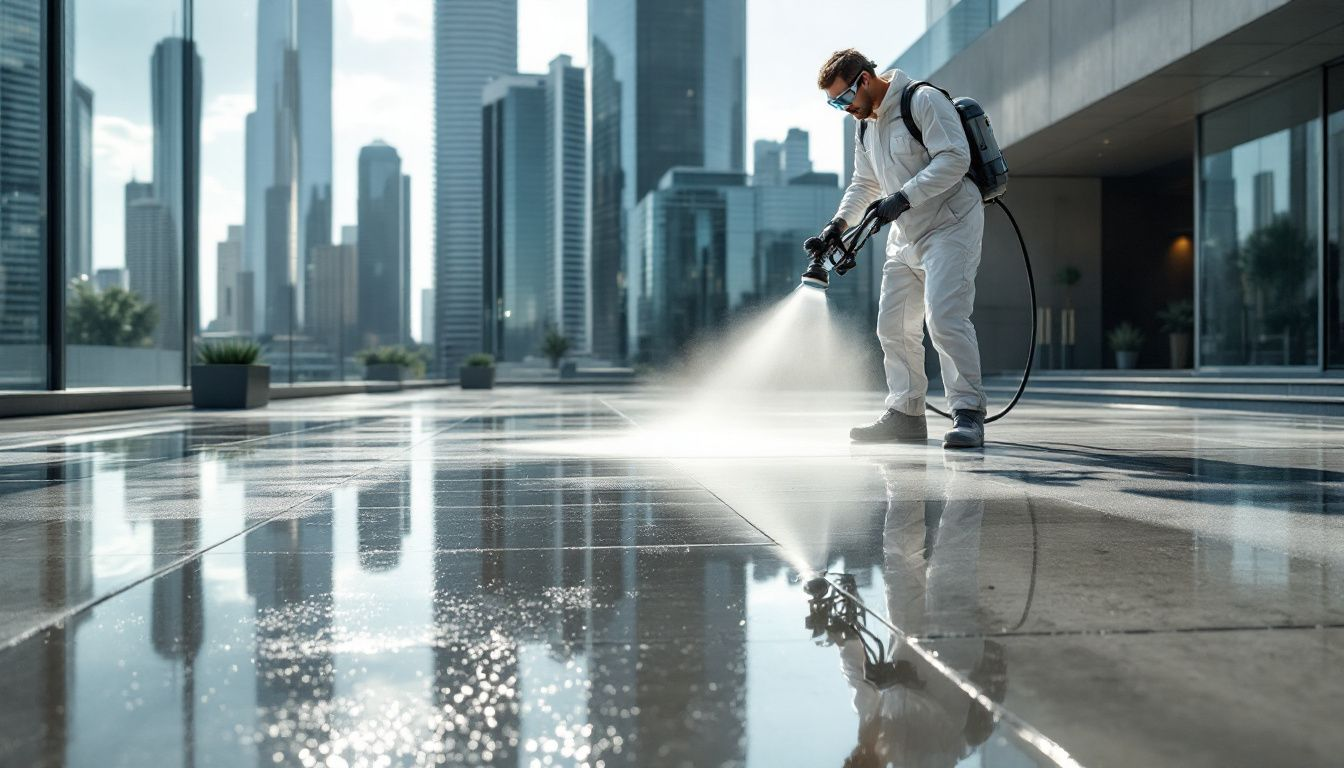
Achieving optimal results with concrete sealers requires following detailed steps and comprehensive instructions to ensure professional-quality outcomes.
Applying sealers correctly can greatly improve the durability and appearance of the coloured sealer surface.
Surface Preparation
Effective surface preparation ensures strong adhesion and extends the sealer’s effectiveness. Here are some key steps to follow:
- Remove all contaminants to prevent oils or stains from affecting the sealer.
- Thorough cleaning is essential to avoid issues like haziness and poor adhesion.
- Ensure dry conditions before applying the sealer.
By following these steps, you can achieve optimal results with your seal sealing project.
Etching the concrete before sealing enhances adhesion by opening the pores. Environmentally responsible sealing includes proper preparation and application techniques to reduce waste and improve sealer longevity.
Applying the First Coat
Applying the first coat evenly prevents uneven surfaces and ensures optimal sealing. Using a roller or sprayer helps achieve even coverage. Apply two thin coats, with the second coat in the opposite direction of the first, for comprehensive coverage.
This method ensures thorough coverage and enhances durability. Following these steps results in a lasting, highest quality acid wash finish.
Additional Coats and Maintenance
Multiple coats significantly enhance protection and appearance. Indoor sealers may require more frequent maintenance compared to outdoor sealers, which must be breathable to manage moisture. Regular cleaning of sealed surfaces helps prevent slipperiness by avoiding contaminant buildup.
Proper maintenance of sealed surfaces ensures longevity and keeps them looking pristine for years.
Common Issues and Solutions When Sealing Concrete
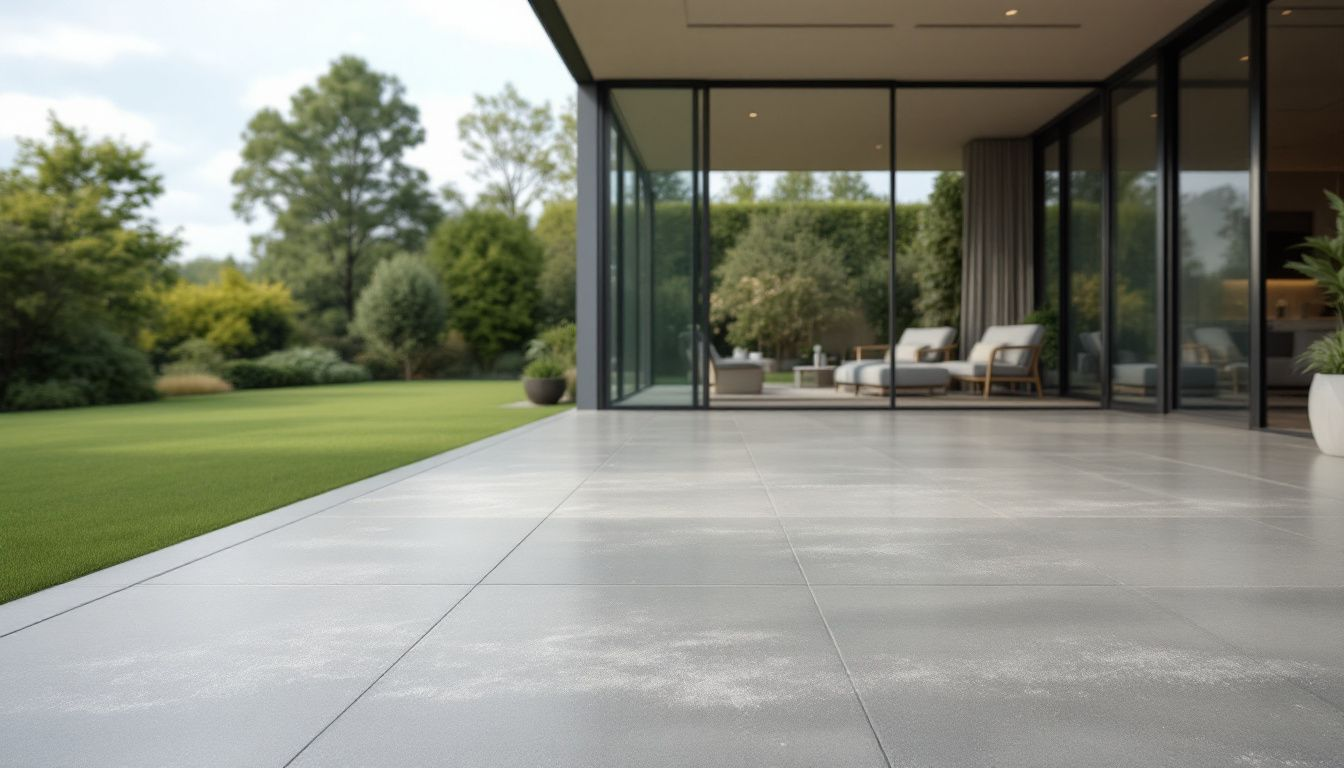
Concrete sealers can experience failures that aren’t always fixed by applying a new coat. Understanding common issues and solutions is essential for achieving the best results.
Efflorescence
Efflorescence, a white powdery substance, appears when soluble salts migrate to the surface due to moisture. It can result from both primary (moisture evaporating from concrete) and secondary (water introduction from beneath) sources. Preventing efflorescence involves proper drainage, well-graded concrete mix, and minimizing water content during mixing.
Proper curing of concrete and applying sealers only when dry help prevent efflorescence. Following these measures minimizes risk and maintains the appearance of your concrete surfaces.
Slippery Surfaces
Slipperiness on sealed concrete is a safety concern. Anti-slip additives can be mixed into sealers or coatings to enhance traction. Mixing slip reducers into the sealer before application offers optimal slip resistance.
Applying textured finishes to sealed concrete creates a more tactile surface and reduces slipperiness. Proper surface preparation avoids issues like peeling or flaking, which can increase slipperiness. Higher gloss levels can increase slipperiness, so choosing the right gloss level is important for safety.
Addressing these concerns ensures the safety and usability of your exposed aggregate concrete surfaces and the surface of the concrete.
Factors Affecting Concrete Sealer Durability
The durability of a concrete sealer is influenced by several factors, including the quality of the sealer, the surface preparation of the concrete, and the environmental conditions during application. High-quality resin-based sealers, for example, offer superior protection and longevity compared to lower-quality alternatives. Investing in a high-quality sealer ensures that your concrete surfaces remain protected for a longer period.
Proper surface preparation is crucial for the sealer to adhere effectively. This may involve cleaning the concrete thoroughly to remove dirt, grime, and other contaminants. In some cases, an acid wash may be necessary to open the pores of the concrete, allowing the sealer to penetrate and bond more effectively.
Environmental factors such as temperature, humidity, and exposure to sunlight also play a significant role in the durability of the sealer. Applying the sealer under optimal conditions ensures better adhesion and performance. By considering these factors and selecting the right sealer, you can achieve long-lasting protection for your concrete surfaces.
Environmental Considerations of Concrete Sealers
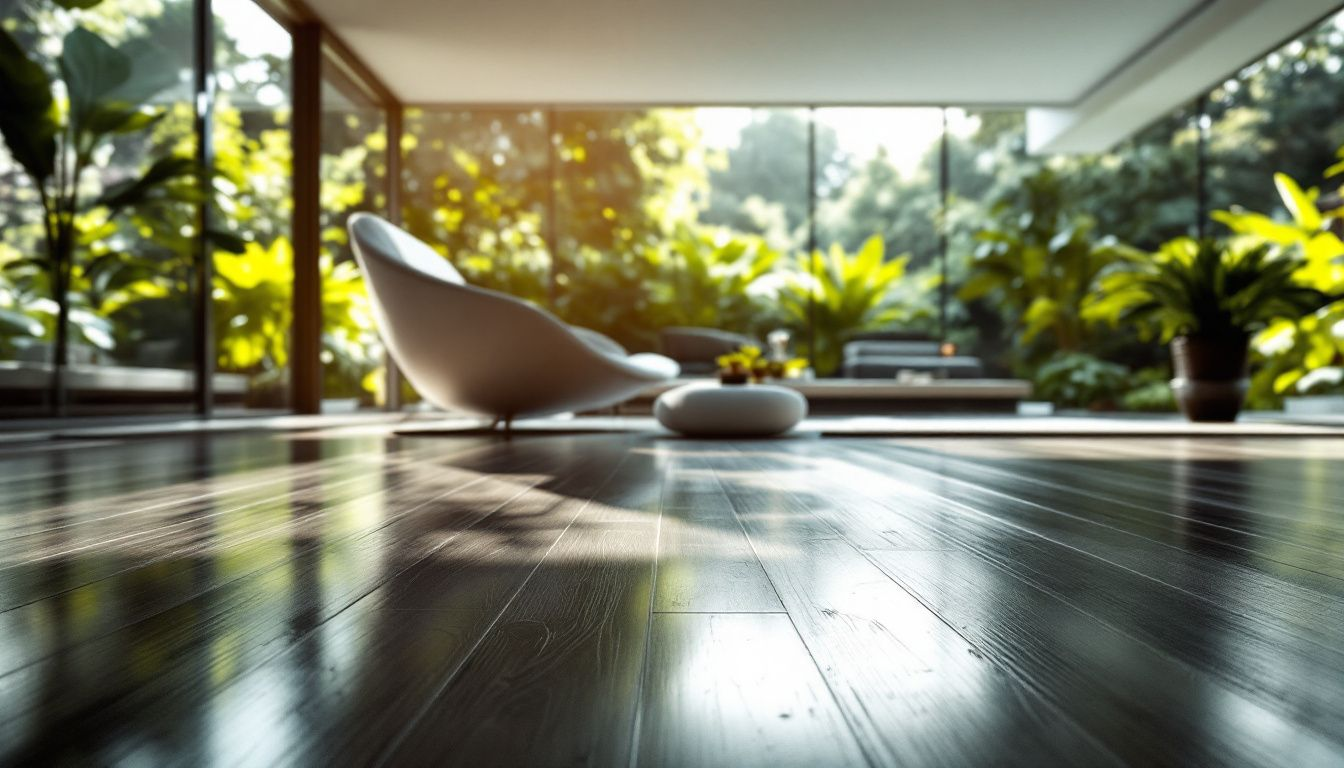
Concrete sealers can emit volatile organic compounds (VOCs), contributing to indoor air pollution and impacting health and the environment. Eco-friendly sealers reduce these emissions, supporting a healthier living environment.
Low VOC Sealers
Low VOC sealers enhance indoor air quality by minimizing harmful emissions. These eco-friendly formulations often include biodegradable components, reducing environmental impact throughout their lifecycle. Choosing low VOC sealers protects concrete surfaces and contributes to a healthier environment.
Concrete sealers prevent moisture penetration, reducing the risk of mold growth. This is crucial for maintaining a healthy indoor environment and ensuring the longevity of concrete surfaces.
Sustainable Practices
Choosing low-impact products reflects a commitment to responsible building methods and sustainability. Sustainable sealing practices involve using natural, biodegradable sealants with a lower environmental impact.
Focusing on sustainability ensures that concrete sealing projects are effective and environmentally responsible. This commitment to eco-friendly practices benefits both immediate surroundings and the broader environment.
Summary
In summary, selecting the right concrete sealer is crucial for protecting and enhancing the appearance of your concrete surfaces. By understanding the different types of sealers—film-forming and penetrating—you can choose the best option suited to your specific needs. Each type offers unique benefits, from robust protection against moisture and stains to enhancing the visual appeal of your concrete.
The application process is equally important, with proper surface preparation, application of the first coat, and additional coats all contributing to the longevity and effectiveness of the sealer. Addressing common issues such as efflorescence and slippery surfaces ensures that your concrete remains safe and attractive. By considering environmental factors and opting for low VOC and sustainable sealing practices, you can achieve optimal results while being mindful of your ecological footprint.
Contact our Auckland concrete team today.
Frequently Asked Questions
How long does sealant last on concrete?
Sealant on concrete typically lasts between 1 to 3 years for acrylic types and around 5 to 10 years for epoxy and polyurethane sealers. It is essential to consider wear and environmental factors that may affect longevity.
How to seal concrete in NZ?
To effectively seal concrete in New Zealand, ensure thorough preparation by cleaning the surface to remove contaminants and applying an acid wash to eliminate laitance. Once the concrete is clean and fully dry, apply two coats of the chosen sealer for optimal protection.
What are the main types of concrete sealers?
The main types of concrete sealers are film-forming sealers, which create a protective coat on the surface, and penetrating sealers, which infiltrate the concrete to establish a durable barrier. Each type serves a distinct purpose in protecting your concrete surfaces. Additionally, different types of sealers provide varying gloss levels, affecting both the appearance and functionality of the concrete, including slip resistance and maintenance requirements.
How do I choose the right sealer for my project?
To choose the right sealer, evaluate the specific application requirements, environmental conditions, and the type of surface involved. Additionally, consider whether the project is intended for indoor or outdoor use and the expected level of traffic.
Selecting the appropriate gloss level is important for both aesthetic and functional purposes, as different sealer types provide varying gloss levels that affect the finish, texture, slip resistance, and maintenance requirements of concrete surfaces.
What is the best way to apply concrete sealer?
The best way to apply concrete sealer is to ensure thorough surface preparation and to apply the first coat evenly using a roller or sprayer, with subsequent coats added as necessary. It is crucial to have the surface clean and dry before beginning the application for optimal results.
About the Author:
Mike Veail is a recognized digital marketing expert with over 6 years of experience in helping tradespeople and small businesses thrive online. A former quantity surveyor, Mike combines deep industry knowledge with hands-on expertise in SEO and Google Ads. His marketing strategies are tailored to the specific needs of the trades sector, helping businesses increase visibility and generate more leads through proven, ethical methods.
Mike has successfully partnered with numerous companies, establishing a track record of delivering measurable results. His work has been featured across various platforms that showcase his expertise in lead generation and online marketing for the trades sector.
Learn more about Mike's experience and services at https://theleadguy.online or follow him on social media:
